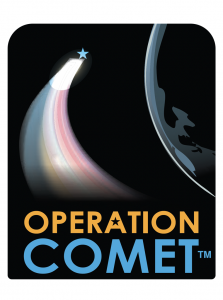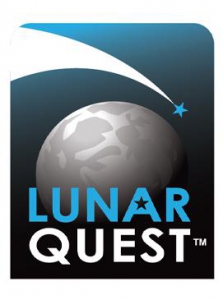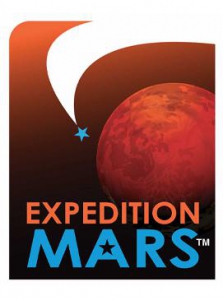On-site Missions (Grades 4-12)
The Challenger Learning Center offers a unique, hands-on learning experience designed to engage and increase student enthusiasm for science, mathematics, and technology and to enhance creative and critical thinking abilities. Each mission is a two-hour learning adventure and is supplemented by a hour-long, hands-on activity facilitated by our trained flight directors. Teachers who have booked a mission are offered a one-day teacher professional development workshop to help prepare them and their students for mission day.
CURRENT MISSION:
 Operation Comet™
Operation Comet™
After several previous failed attempts, the crew is tasked with a mission to observe, research, and analyze long-period comets that have entered our solar system. Astronauts in both Mission Control and Spacecraft conduct experiments to study comets to help scientists better understand how they are formed and how they could potentially impact Earth. During the mission, however, a shocking discovery is made, and the crew must brainstorm together to solve the emergency, ensuring the safety of the crew and the success of the mission.
 Lunar Quest™
Lunar Quest™
NASA recently launched a Rover to the Moon to explore new areas and collect critical scientific data. However, the Rover lost power before any of the findings were sent back to Earth. We need a faster and more reliable process to gather this type of information. NASA has a new directive—human astronauts will return to the Moon! As a team of astronauts, your students must board a Spacecraft and launch to the Moon in search of a long-term habitat. Another team of scientists and engineers are stationed in Mission Control on Earth to command and assist the astronauts on this mission. Once the Spacecraft crew successfully lands on the Moon, they must deploy a Lunar Exploration Rover to identify a suitable location for a sustainable long-term human habitat. However, when the crew receives troubling readings from below the Moon’s surface, the two teams must work together and make critical decisions to turn a potential catastrophe into NASA’s finest hour.
 Expedition Mars®
Expedition Mars®
The year is 2076. Humans have solved some of the larger problems associated with a long term Mars mission, including radiation exposure and landing large payloads safely on the surface. A handful of facilities have been established on the Martian surface including a Greenhouse, a mobile geo survey base, and a centralized research habitat, however the primary human habitat within the Mars system is located on its moon, Phobos. Our shuttle, or Mars Transport Vehicle (MTV), serves as the spacecraft for the mission carrying parts to build a ROV for hydrological exploration. When crew members discover a threat to their MTV base, they must act quickly to save their crew and their station while achieving three goals: to search for evidence of life on Mars, to search for evidence of water, and to keep everyone safe. Using teamwork and creative problem solving, the crew will be able to continue their research on our neighbor planet.

